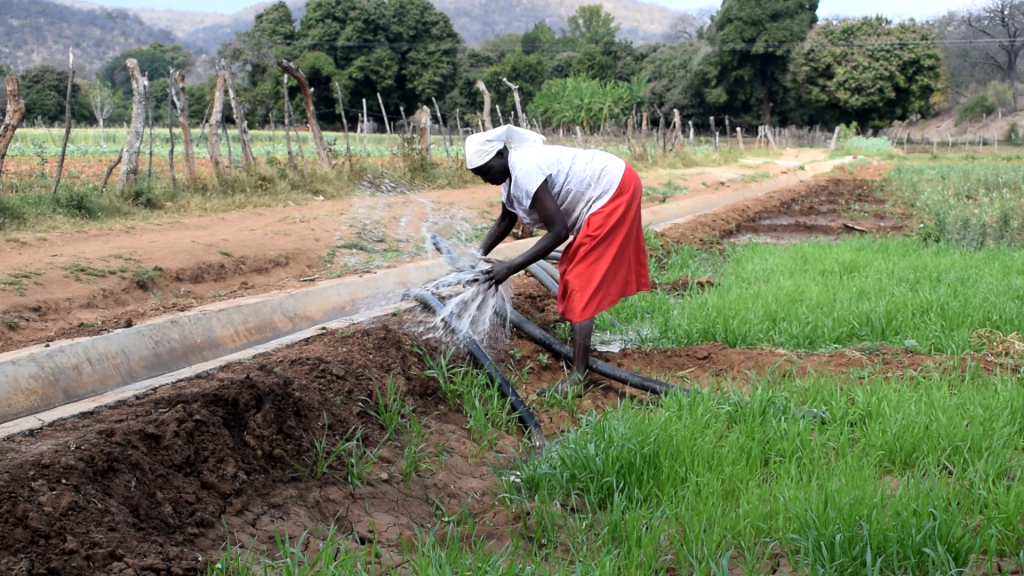By Conrad Mwanawashe, Recently in Manicaland
All she knows is that she was born in 1952.
And her name. Margaret Nenohwe.
She spends her time preparing her one acre plot at Nyanyadzi irrigation scheme, Block C, in Chimanimani District, east of Zimbabwe.

“Muviri hauchada (I am now too old for this workload),” she said with a whimper as she struggled to move her hoses to siphon water from the canal.
She has to move about eight hoses to ensure that she can water a section of her wheat field.
“Asi ndokuti ndirarame. Ndamukira mangwanani. (This is my livelihood. I started early today),” she added with a chuckle.
When siphoning water from a pool or canal, you need to put one end of the hose in the pool or canal and the other end outside, below the level of the water in the pool or canal and in an area where you want the water.
You could use your mouth to suck water through the hose to get the flow of water started, or you could use a small pump. Gogo Nenohwe uses either of these methods.
She partially blocks the end of the hose which is outside the canal, while moving the hose back and forth. At intervals, she allows the water to gush out. When she feels the pressure of the water, she then tactfully lays the end of the hose in the field.
One by one, the hoses pelt the field.
She sits on the ridge of the canal watching as water continues to drain from the canal. At some point, she moves through the field monitoring the flow of the water. This is repeated until she is satisfied that the field has drunk enough.
At that stage, one by one, the hoses are lifted above the water level to stop the siphon.
Time to move to the next piece of the field.
This tradition of using siphons has been traced back to ancient Egypt where they used siphons in agriculture to transfer water from canals to irrigation channels.
Gogo Nenohwe is one of the farmers at the 65 hectare- Nyanyadzi Irrigation Scheme Block C, according to Pfungwa Mabika, a committee member at the scheme. There are 100 plots at the scheme.
“Our water management system is tight. We have a roaster which takes into account soil type and condition of the crops,” said Mabika.
The canals were constructed by UNOPS in Zimbabwe which is helping to build the foundations to support the country’s development agenda with a focus on sustainability and national capacity development. In close collaboration with government, UN organizations, non-governmental organizations and international financial institutions, UNOPS manages funds for disaster recovery and implements infrastructure projects with a focus on resilience and building back better.
“UNOPS constructed 1,500 metres canals and we expect to complete the remaining 300 metres. The canals have helped reduce the time we take to water our fields. Since the canals were constructed our yield has improved and water leakage has drastically come down,” said the vice chairman of the committee.
“We are appealing for the construction of a dam so that we harvest water during the rainy season. We thank God that we received good rains last season because it would have been dry about this same time of the year in other seasons. So a dam would ensure that we have enough water throughout the year,” he added.
Mai Mugebe chipped in saying the canals have ensured that the farmers have adequate water.
“This means that we can do our farming business throughout the year guaranteeing us regular income. We have kicked poverty good bye,” said Mugebe.
“We hope UNOPS will consider erecting a security fence around the scheme so that we keep livestock away from our crops.”









